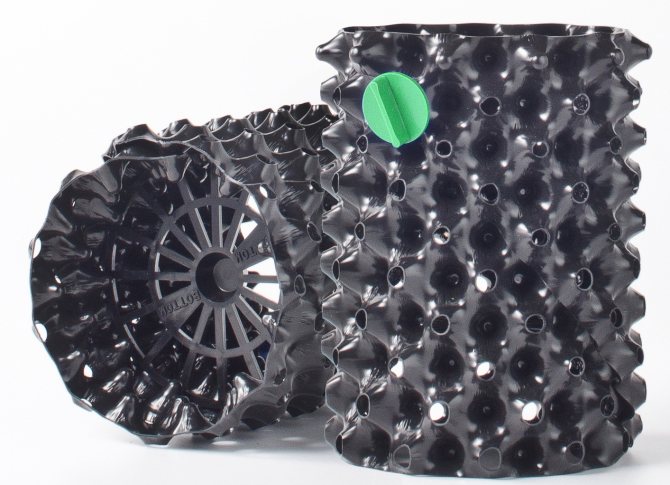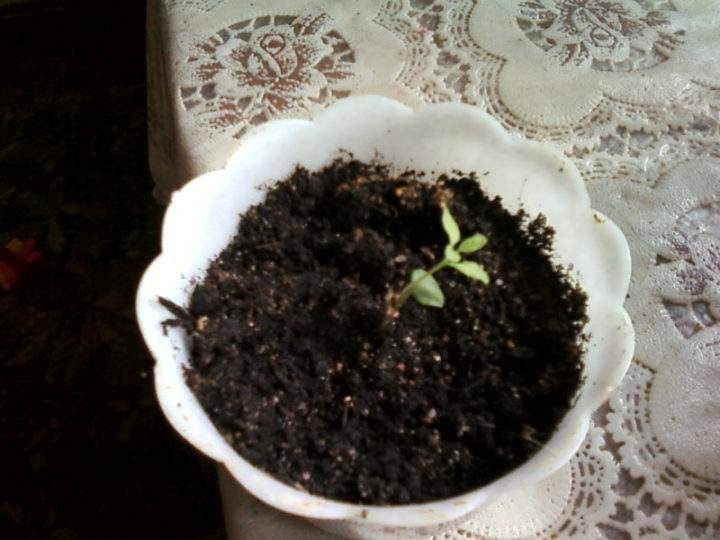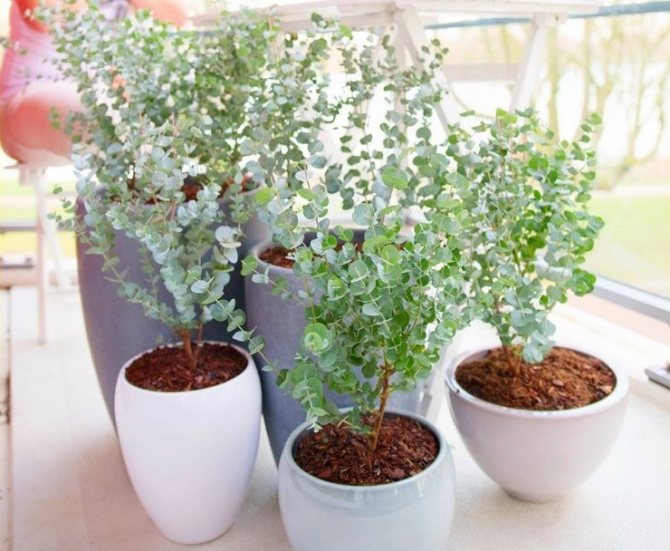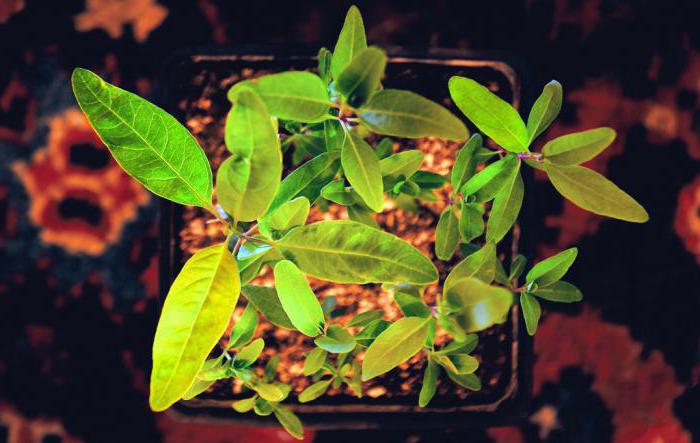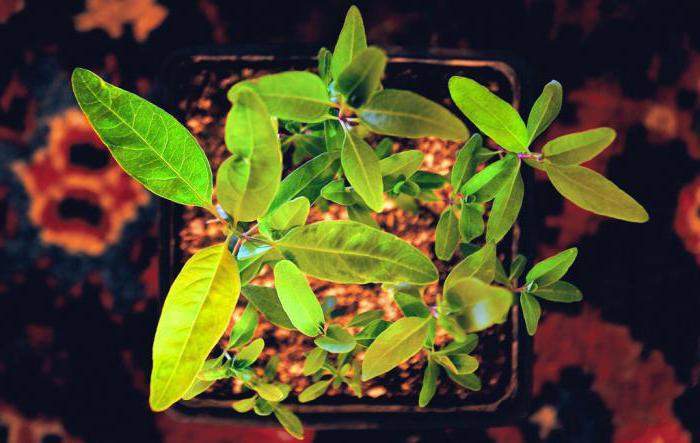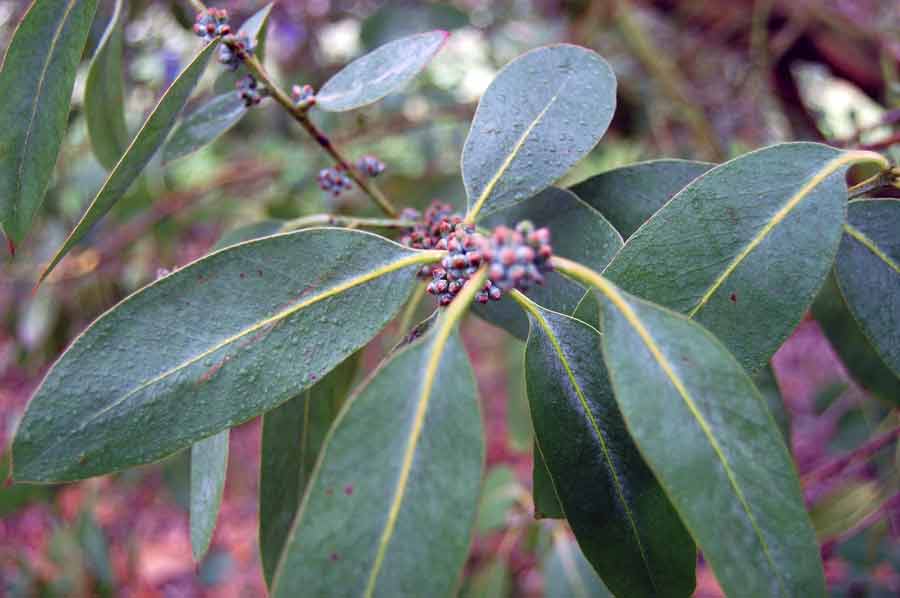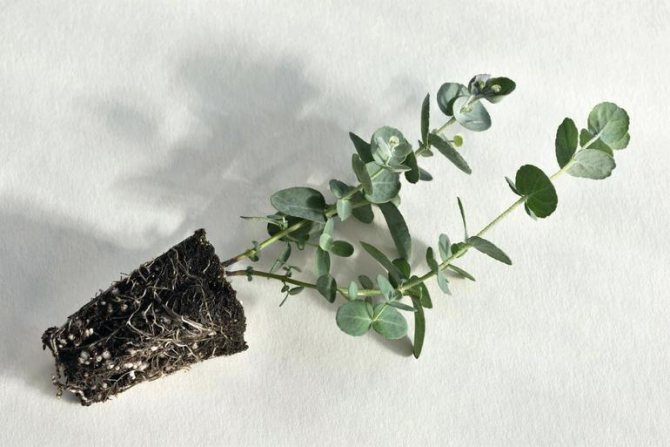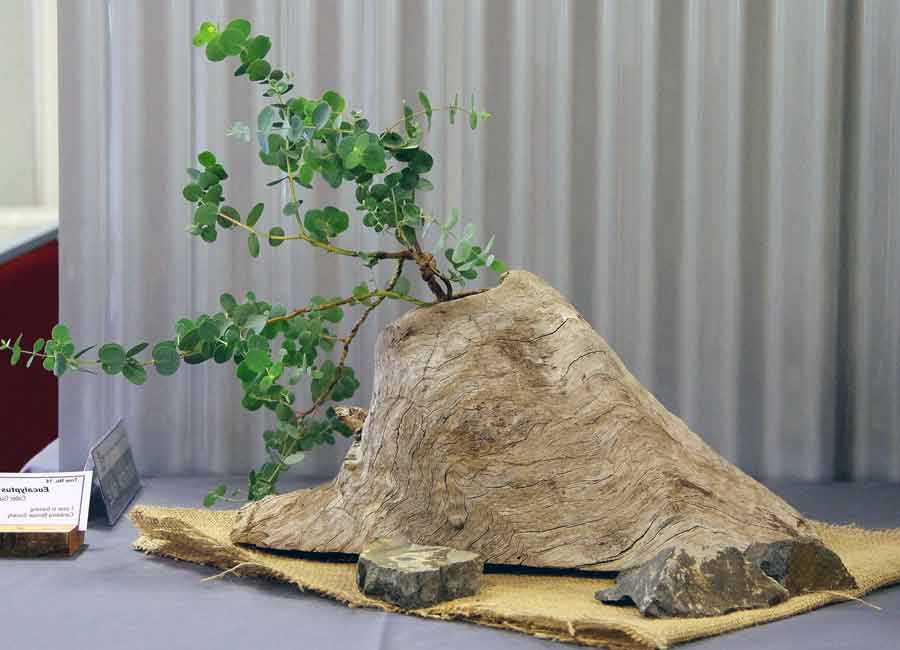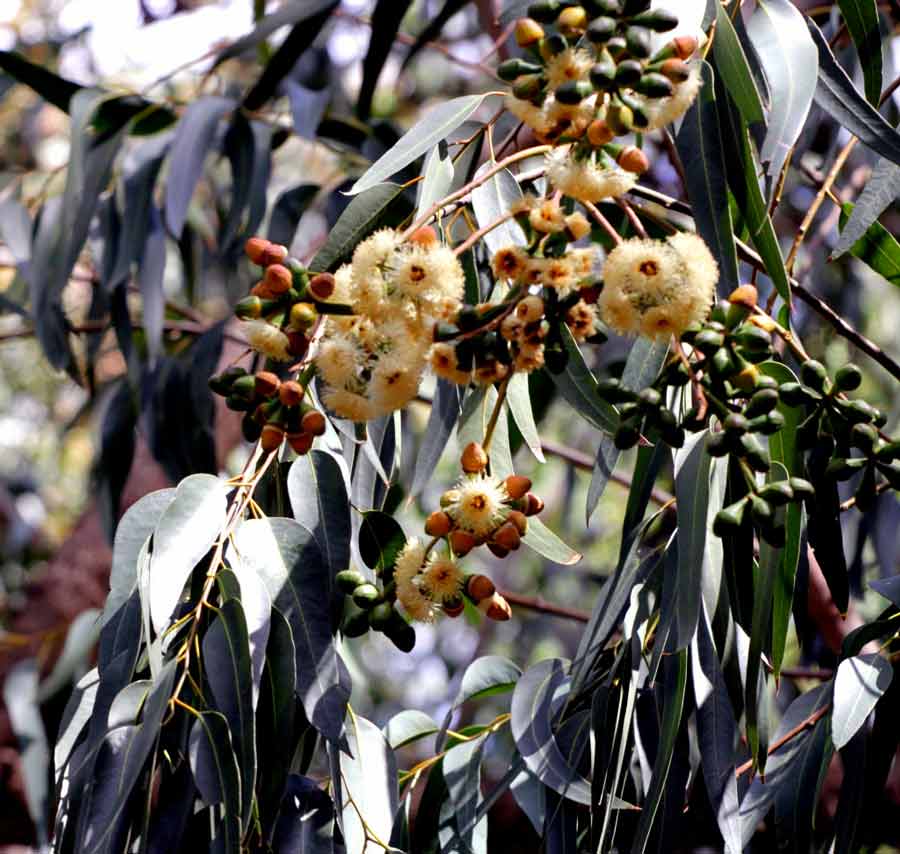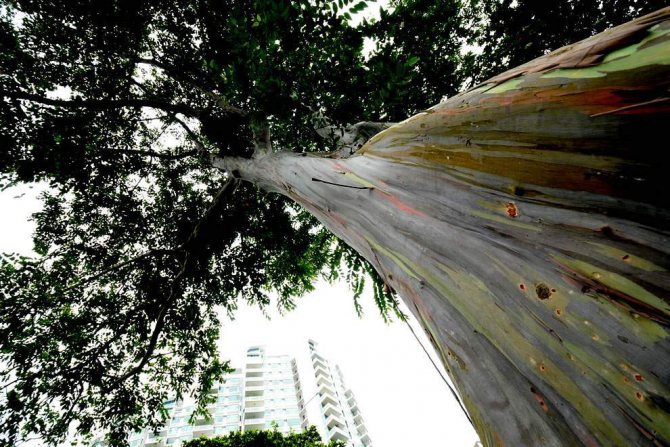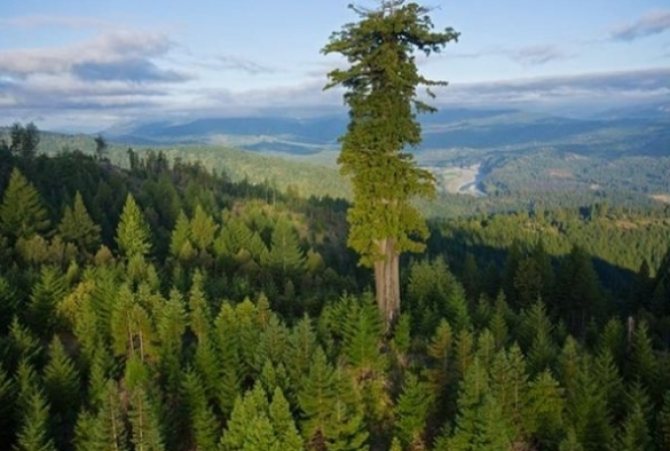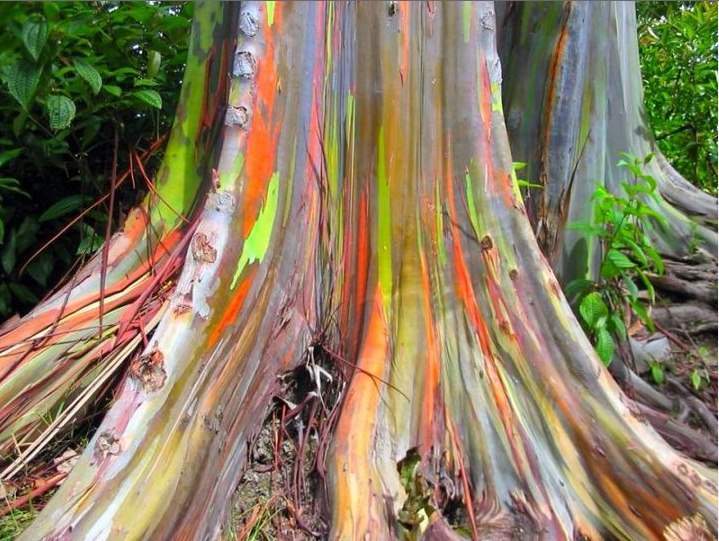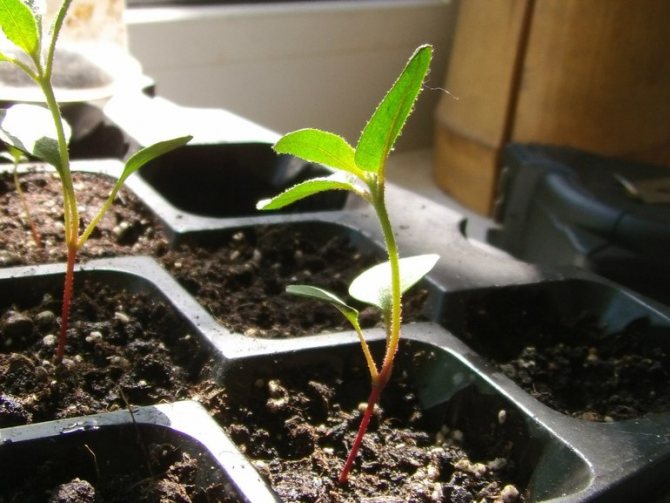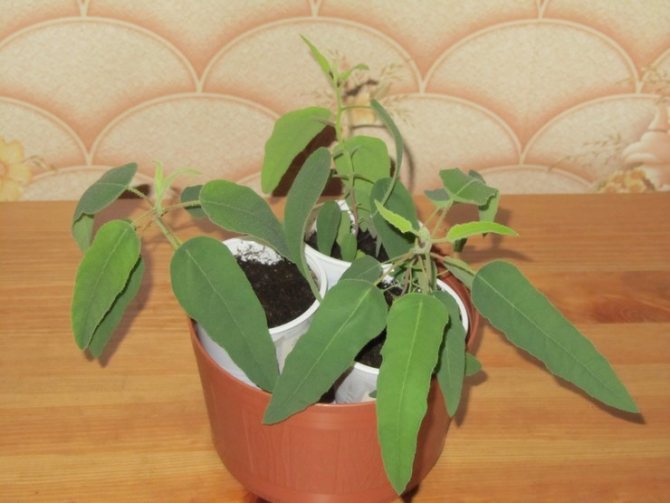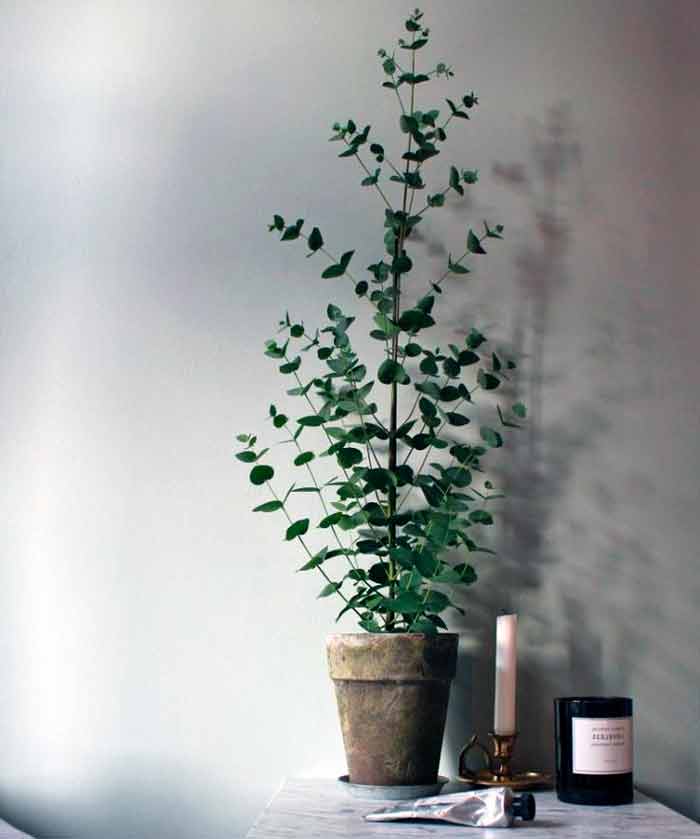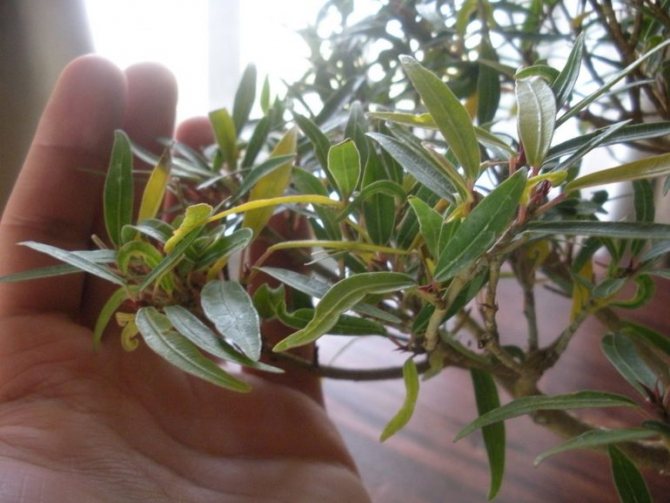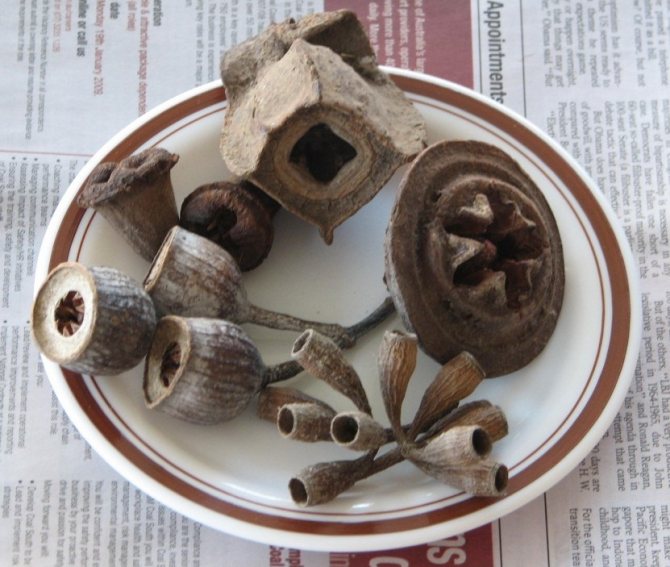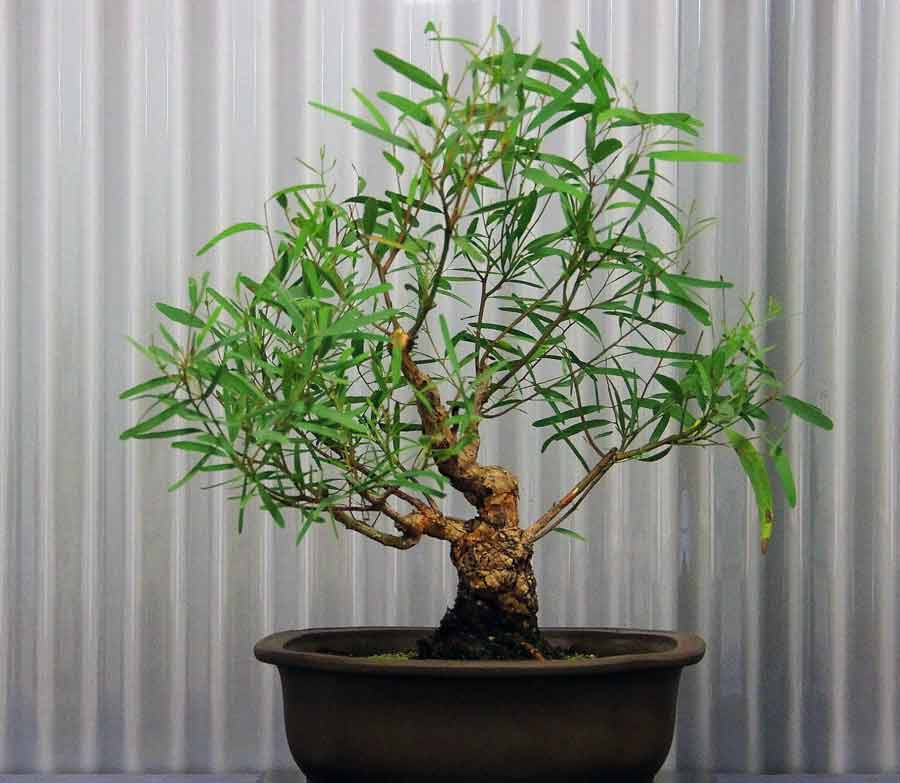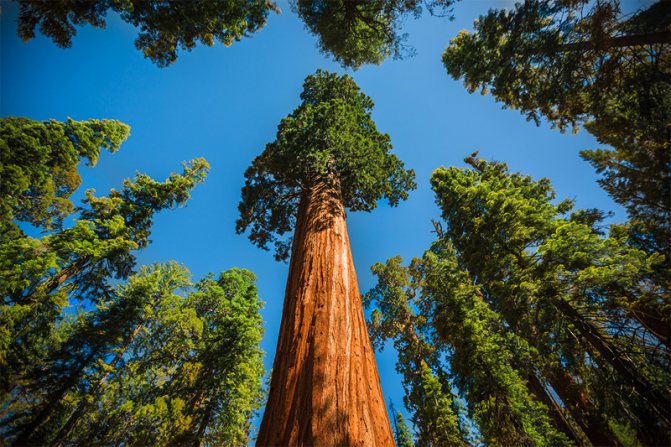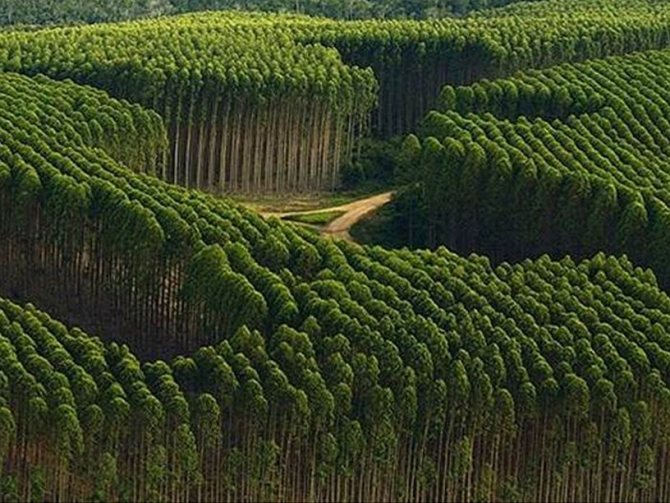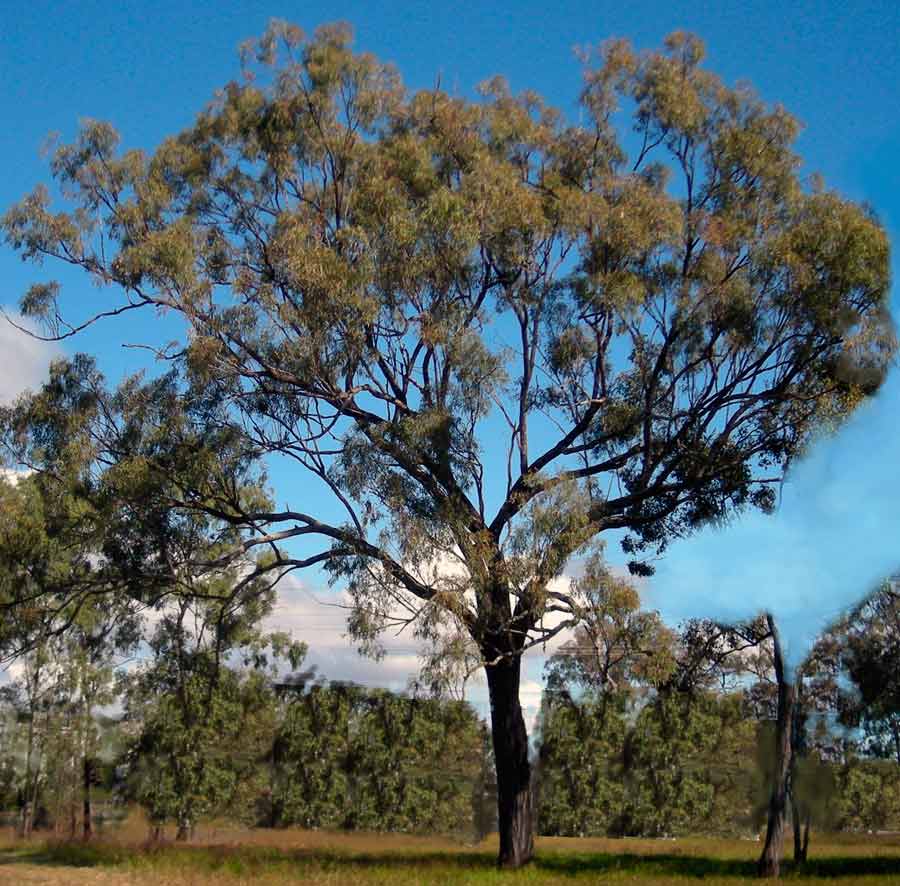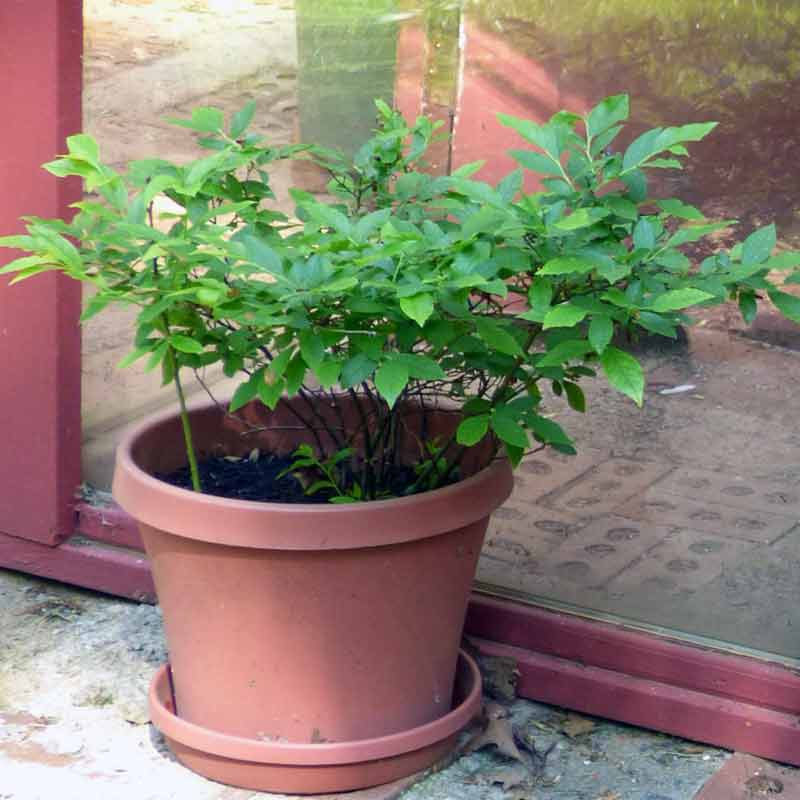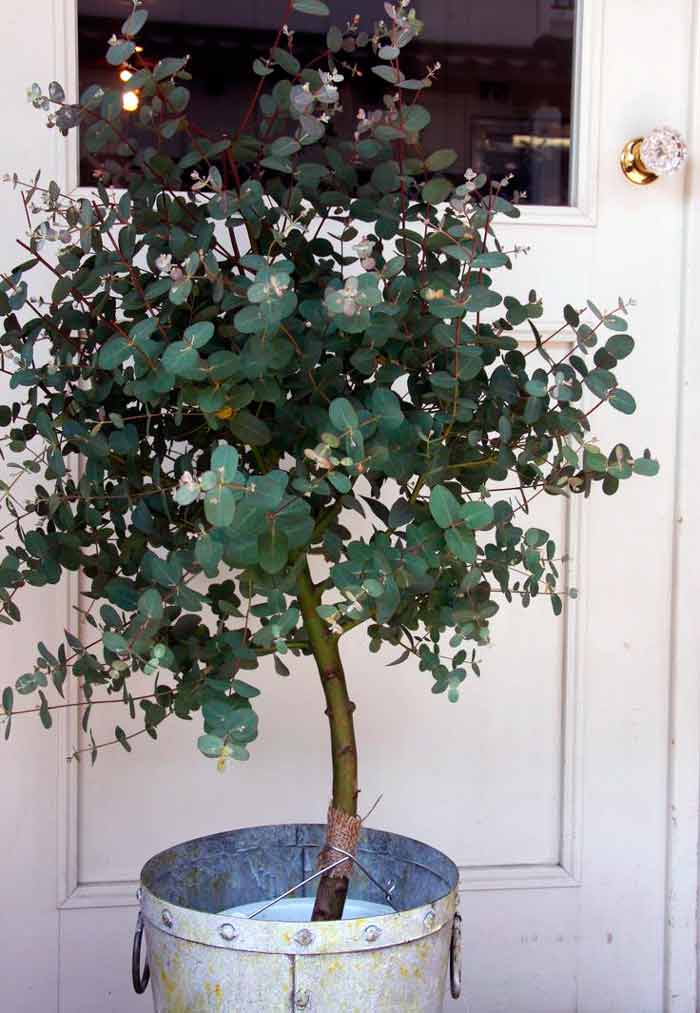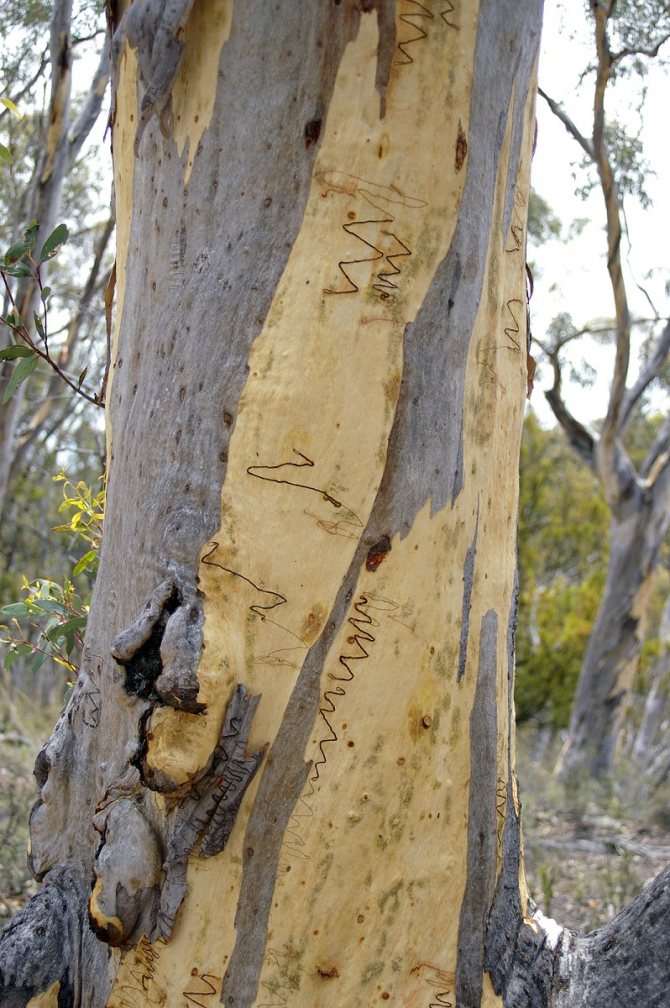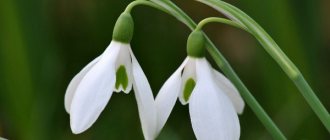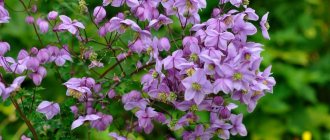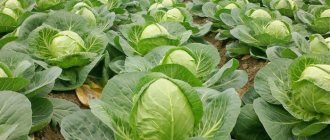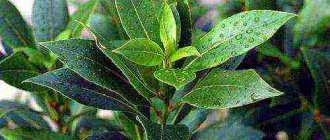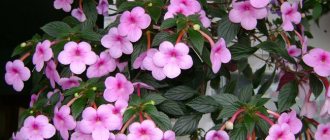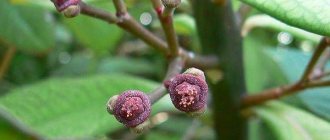Eucalyptus (Eucalyptus) is one of the fastest growing and largest trees in the world. The genus of culture has more than 700 plant species, most of which are from Australia.
Nowadays, eucalyptus trees are widespread in Africa, Asia, South and North America.
Australian eucalyptus has been recently cultivated as a houseplant. According to NASA, the crop is among the top 10 indoor plants that improve indoor air quality.
At home, the tree is completely undemanding and, unlike other crops, indoor eucalyptus is unusually resistant to pests.
Eucalyptus and its types for home cultivation
Eucalyptus, called in Latin Eucalýptus, has 700 species in its genus and is a member of the myrtle family. The native land of the tree is Australia.
Nowadays, eucalyptus can be found in many countries around the world due to its ability to drain wetlands. For its many beneficial properties, the plant acquired another name - "Wondrous tree".
In the lap of nature, eucalyptus grows up to 100 m in height. At home, it reaches only 2 m. The leaves of the tree have a bluish-green color and are covered with a waxy coating.
Young eucalyptus leaves are ovoid and small in size. With age, the foliage of the tree takes on an elongated shape. Eucalyptus leaves are saturated with essential oils and exude a pleasant aroma around them. In room conditions, practically impossible to seelike a tree blooms.
There are only two types of eucalyptus that can be grown at home:
- Eucalyptus Gunny, called in Latin Eucalyptus gunnii Hook.f. Is a fast-growing tree with a lush crown and a trunk painted in orange and pink tones. It grows up to 50 cm per year and reaches 2 m in height with age.
- Lemon eucalyptus, in Latin called Eucalyptus citriodora Hook Is a tree with foliage with a unique aroma, in which you can catch notes of lemon, lemon balm, verbena and thyme.
Modern technologies
Scientists have managed to make this amazing plant even more valuable using selection and genetic engineering.
Modified specimens grow 40% faster than normal ones. They survive even in darkened landings. From such a tree, you can get about one and a half times more wood, essential oil, coal.
Experts believe that the spread of such plants can solve many industrial problems.
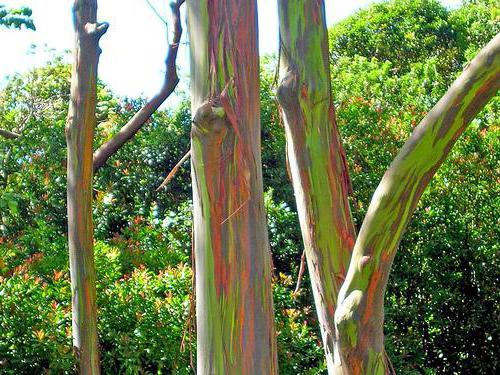
Site selection and lighting
Eucalyptus loves light and sun. However, it should be gradually accustomed to the sun's rays so that it adapts and does not get burned. Perfect place for the location of the tree - the southern window or as close as possible to the western or eastern window.
In summer time desirable take the eucalyptus to the balcony, veranda or garden. In winter, it is necessary to provide it with the brightest place in the house.
Eucalyptus is enough hardy tree and can even withstand light frost. However, for indoor species in summer, the optimal temperature is from 20 to 25 ° С, and in winter - not lower than 10 ° С.
Essential oil
The older the tree, the more nutrients are in the leaves, which are collected in summer and autumn - at this time, the percentage of oil is highest.And among all species, the most valuable is the ball (ball) eucalyptus. You can extract not only fresh leaves, but also dry ones.
Eucalyptus oil is a yellow, colorless or greenish viscous liquid with a recognizable odor. There is a huge scope for its application.
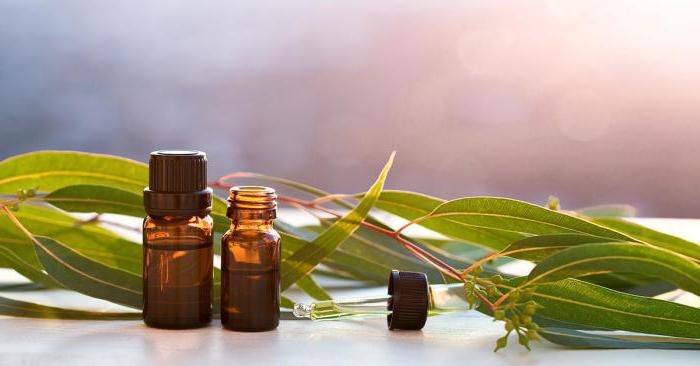

Oil vapors refresh and purify the air, fill it with a pleasant aroma, and repel insects.
Eucalyptus essential oil is a part of toothpastes and elixirs, cosmetic products, soaps, hair care products.
Watering and moisture
Water the eucalyptus need abundantly. The soil in his pot should always be slightly moist. In winter, you can reduce watering and carry it out, waiting for the top clod of earth to dry out.
The tree loves soft and settled water, warmed up to room temperature.
If you want to know if it is possible to keep a philodendro at home - read our material.
Our article will tell you how to grow balsam at home.
Eucalyptus does not tolerate spraying, and normal air humidity is fine with him. You can put the container with the plant in a tray with wet filler. It will only do him good.
Plant species
Out of more than 700 different types of eucalyptus, about 60 are suitable for growing at home. The following varieties are most popular with flower growers:
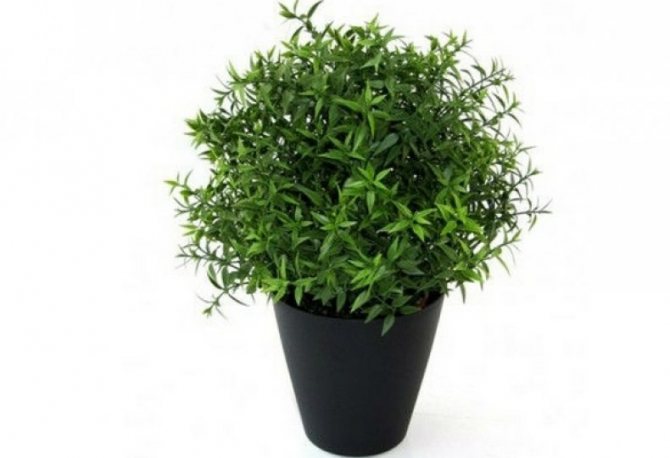

Eucalyptus globulus or globular eucalyptus, according to many growers, is one of the most beautiful plants that can be grown in pots on the windowsill of a city apartment. Its crown is pyramidal, and its silvery-blue leaves are covered with a thin waxy coating.
Ash eucalyptus is also called silver. It may have gotten its name from the fact that when its gray leaves dry out, they look like silver coins.
In Hunni eucalyptus, the leaves change shape as they mature. Young - they are rounded, but as they get older, the leaf plate lengthens. This variety, unlike others, does not have the characteristic odor inherent in other eucalyptus trees.
Lemon eucalyptus is highly aromatic. Its smell resembles a little lemon. The leaves of the plant are light green speckled.
In addition, no less beautiful dwarf varieties can be grown in a flower pot: Blue baby, Azura, populus, rainbow, etc.
Transplant and feeding
For wood soil required, rich in minerals and with a large drainage layer. It is recommended to prepare the soil yourself from the following components:
- 2 parts of sod land;
- 1 part of humus;
- 1 part of peat land;
- 1 part river sand.
Young eucalyptus need in an annual transplant, mature trees - every two years. When replanting a tree, you do not need to deeply deepen it.
From early spring to autumn, it is recommended to feed the indoor tree with a solution of complex mineral fertilizer twice a month.
Content temperature
In order to ensure good growth and development of eucalyptus, during the period of intensive growth and in the summer months, it is necessary to maintain the temperature in the range of 24 to 26 ° C. If possible, it is advisable to take the plant out into fresh air, since constant air circulation is very important for it. It is important to take into account that drafts have a negative effect on eucalyptus. With the onset of cold weather, the temperature of the content is reduced to +16 ° C.
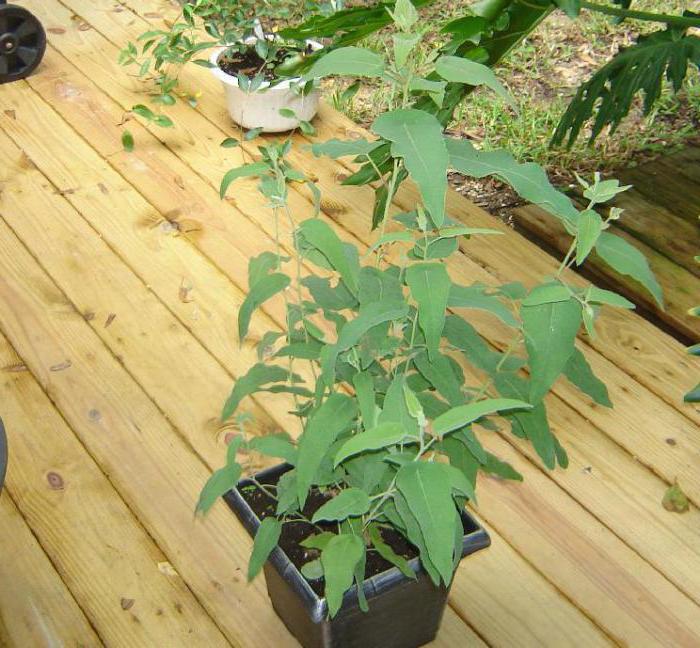

Pruning
To keep the eucalyptus from growing in height, it needs to be pruned annually in the spring. Main trunk trees should be cut to the desired height.
The renewed eucalyptus will begin to release young shoots, forming a luxurious bush. For better bushiness recommended pinch fresh shoots.
As the eucalyptus grows, you may need root pruning during the transplant.Thus, the tree is limited in growth if the usual pruning does not help.
By pruning the roots, you can also adapt the plant to the small volume of the pot when growing. in technology bonsai.
Read also: Wood pellets for heating
Video review


Eucalyptus, in the minds of most people, is a huge tropical tree with amazing healing properties. And this is absolutely true, because in the wild these are real giants. They grow up to 150 meters in height and are capable of absorbing up to 300 liters of water in one day. But it turns out that a small eucalyptus tree can be grown in an ordinary city apartment. Of course, it will not become as large as in its natural habitat, but at the same time it will have the same medicinal properties.
Reproduction
Eucalyptus cuttings take root with great difficulty, so it multiplies only by seeds... Sowing seeds is recommended in March or February in a substrate prepared in equal parts from sand and sod land. It is necessary to plant 2 or 3 seeds in a pot with a drainage hole for the "greenhouse", without sprinkling it with earth.
Providing seedlings temperature from 20 to 25 ° C, you can wait for shoots within 3 weeks. Sometimes the first shoots may appear after 3 months. After the seedlings have a couple of real leaves, you can plant them one at a time in separate containers with a diameter of 7 cm.
Recommended soil composition for young eucalyptus trees:
- 1 part of humus;
- 1 part of sod land;
- 1 part coarse river sand.
Shameless trees
Eucalyptus got this funny nickname due to their unique feature. There are not many known trees that are able to free themselves from the bark on their own.
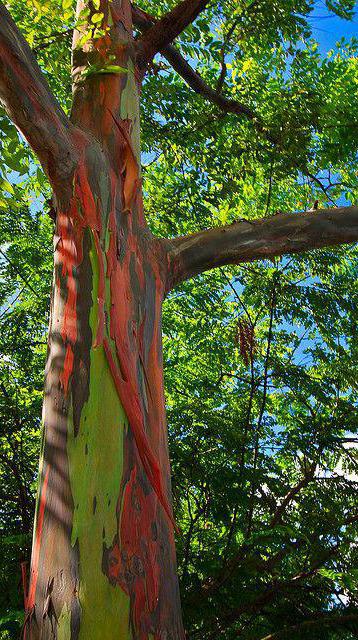

Bare trunks once struck the Russian writer V. Soloukhin when he was vacationing in the Caucasus. He later wrote that eucalyptus is a tree that can "rejuvenate forever". By the way, the plane tree (plane tree) has a similar feature.
People often jokingly call trees without bark naked or "shameless".
The outer crust begins to crumble in March. At that time, autumn was in full swing in the Southern Hemisphere. Trunks and branches turn gray, yellow, greenish, bluish.
Pests and possible problems
Due to its antiseptic properties, eucalyptus is not prone to diseases and pests.
However, improper care can lead to the appearance of uninvited guests in the form of a scale insect and a spider mite. If insects are found, remove them with a damp sponge and treat the plant with insecticides.
Possible problems with eucalyptus:
- The shoots stretched out and the leaves were chopped - lack of light.
- Leaves wither and curl - poor watering, lack of light.
- There are spots on the leaves - sharp movement under the sun's rays.
- Slow growth - stagnant air, drafts.
Description of the genus
Eucalyptus belongs to the myrtle family and is native to Australia. Its main feature is the rapid absorption of moisture, thanks to this property, such plants are grown in many countries of the world to drain water bodies.
The tree has a smooth, sometimes colorful bark that changes annually, unlike other plants that change leaves. Due to the change of the bark, the trunk seems to be bare, therefore, the eucalyptus is also called "shameless".
The leaves of plants of this genus are green, elongated, located on the branches in completely different ways. Most eucalyptus trees have a lush crown that tends to grow into a few branches and leaves over time.


It blooms in autumn in the third and fifth year of life with large white or pale red flowers. The characteristic smell that comes from the tree can be heard even at a great distance.
Did you know? Eucalyptus is one of the tallest plants in the world. The highest growth that a eucalyptus tree has ever reached is 189 m.The largest eucalyptus plant today is
"Centurion" on the island of Tasmania, its height - 101 m.
Beneficial features
Eucalyptus is a truly healing tree that has many beneficial properties:
- The leaves of the plant contain essential oils and have bactericidal, antiseptic and anti-inflammatory effects.
- Eucalyptus, excreting in large quantities phytoncides, cleans the air in the house from pathogenic bacteria. One tree is enough for one small room for a healthy atmosphere.
- Inhalation with leaves eucalyptus treats respiratory diseases.
- For the prevention of colds it is useful to wrinkle the leaves eucalyptus and inhale their scent.
- The smell of leaves eucalyptus is afraid of flies and mosquitoes.
As you can see, the "wondrous tree" is not at all demanding in its care. It is enough to regularly devote a little time, warmth and care to eucalyptus - and home "Green doctor" will bring you a lot of joy, beauty and benefit.
News from partners:
1 comment
Hello. In the spring I bought a sapling of Guni eucalyptus. He spent the summer on my balcony (north side) and felt great, even grew up. In the fall, when I brought him into the room, he also felt good, he even released new leaves. And then, literally, in 2 days the leaves became dry and, it seems to me, it dried up. I thought that I flooded it (it got cold outside, and the heating is not turned on). I decided to see what was happening with the roots and took it out of the pot. Everything turned out to be in order with the roots, I added a little fresh earth, returned it to the pot and poured it, just in case, with phytosporin, but the tree did not recover. What should I do? I am so sorry for him, I really, really liked him. Maybe he fell into hibernation, and will wake up in the spring? (But I heard that if indoor eucalyptus has shed its leaves, then they no longer regenerate).
Botanical name: Eucalyptus.
Homemade eucalyptus - family ... Myrtle.
Where grows ... Australia.
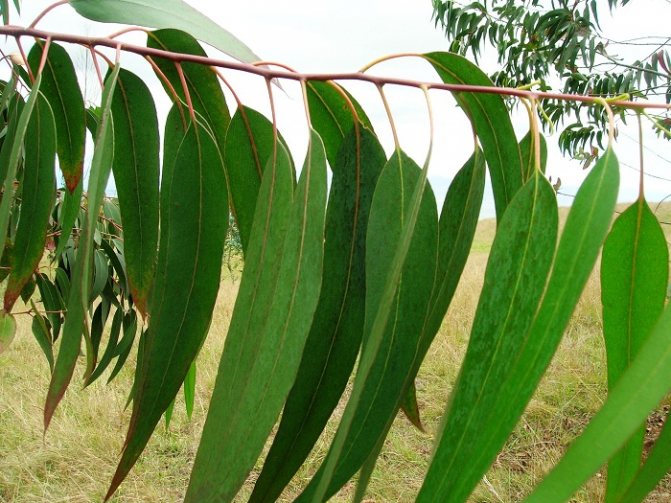

What does it look like ... Eucalyptus trees are fast growing evergreen or deciduous, spreading trees that are often impressive in size. The trunks of trees are very strong, powerful, their bark is colored in various shades of green, reddish, brown, orange. The crust often flakes off in thin layers. Leaves are simple, dark green, glossy, leathery, narrow-lanceolate. Eucalyptus flowers are collected in small inflorescences - brushes and resemble puffs - have many long stamens of white, orange, red, pink. Eucalyptus leaves contain beneficial essential oils and, when damaged, give off a pleasant scent.


Tree height ... Some trees in nature reach a height of 100 m.The eucalyptus at home develops quickly - in one year it can reach a height of 1 m, but in indoor conditions its growth can be corrected by pruning at a height of 90 - 180 cm.
The main inhabitant of eucalyptus groves
One of the symbols of Australia is the cute koala animal. He only lives where the eucalyptus tree grows. Koalas have a unique structure of the gastrointestinal tract, due to which they can feed on eucalyptus leaves. And this, I must say, is not so easy. Indeed, in addition to a huge amount of nutrients, the leaves also contain a lot of hydrocyanic acid.
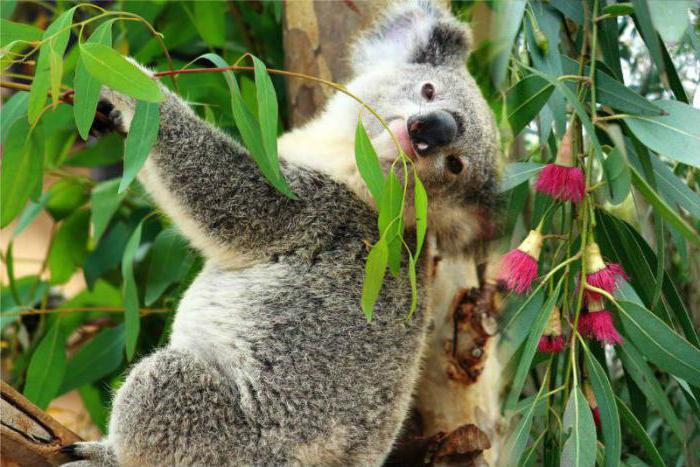

These animals spend almost their entire lives in trees.
1.Eucalyptus - home care
1.1 Temperature for a houseplant
In spring and summer for a houseplant, the temperature range from 18 to 24 ° C will be optimal. Eucalyptus loves warmth and, with adequate watering, will perfectly tolerate the summer heat. In the winter months, it is advisable to give the plant a rest in a cool room with a temperature of 7 - 12 ° C.
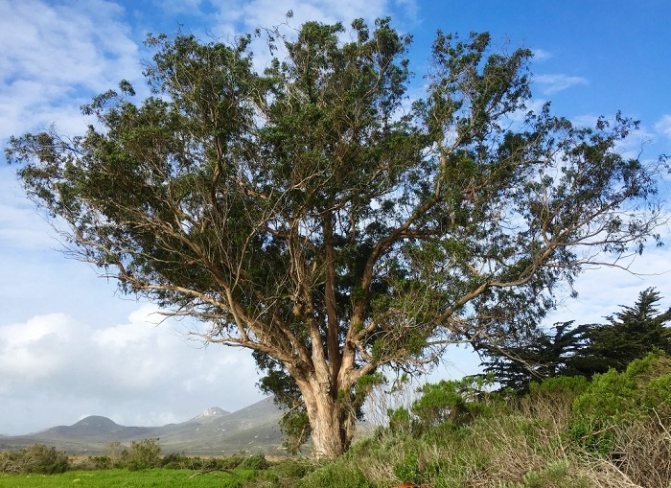

1.2. Growing eucalyptus, pruning
Eucalyptus in the room is picky, but takes up a lot of free space. Trim long branches to compact the plant.Rotate the pot a quarter turn every week for symmetrical development. Take the plant outside during warmer months.
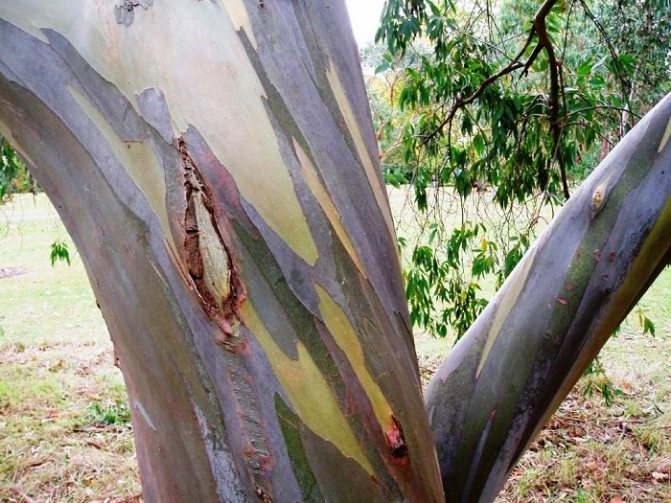

1.3 Lighting
Indoor eucalyptus loves a brightly lit location with plenty of reflected sunlight and direct sunlight in the morning and evening hours. Light shading is possible on hot summer days. This plant is successfully grown under artificial supplementary lighting. Good growth rates are only possible with long daylight hours.
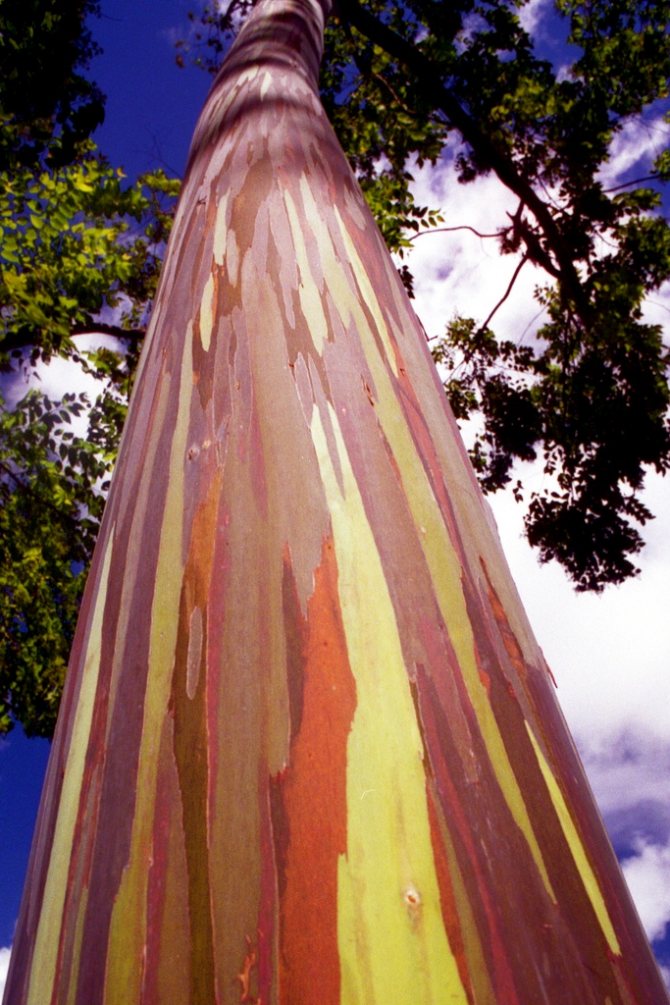

1.4 When eucalyptus blooms
In indoor conditions, flowering does not occur.
Read also: Rose Cuthbert Grant photo and description
1.5 Diseases and pests
Leaves fall off with prolonged overdrying of the soil or lack of light. When water stagnates in the pan after watering, the plant rots. Eucalyptus is very rarely attacked by insects - pests, only occasionally spider mites appear.
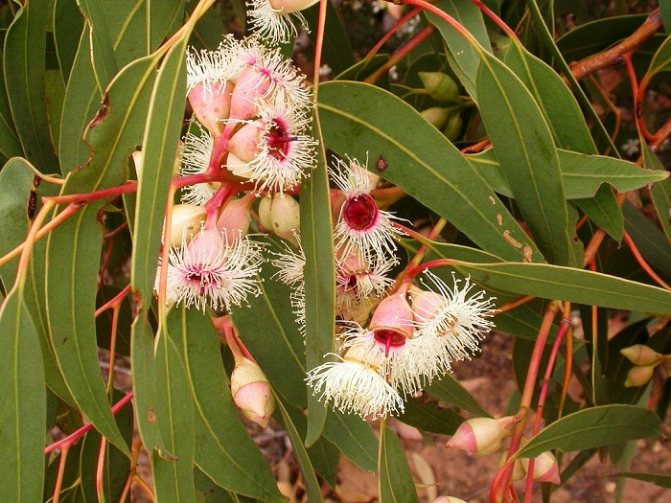

1.6. Reproduction of eucalyptus
Eucalyptus seeds are sown in spring on the surface of slightly moistened, loose, nutritious soil - for germination they must be exposed to light. At a temperature of 21 - 24 ° C and under cover of transparent plastic, glass or a simple plastic bag, germination occurs within a few days, but in some species it can take a month. The germination capacity of fresh seeds is good, but a lot of young plants die from non-compliance with the water regime and lack of light. Seedlings are ventilated daily, gradually increasing the ventilation time. The first pick is carried out when the plants reach a height of 4 - 5 cm and have 4 leaves. Sometimes mold that appears on young trees can be removed with a dark solution of potassium permanganate.
Eucalyptus also reproduces well by cuttings that can be rooted throughout the year. Cuttings root most successfully in high humidity - cover young plants with glass or a transparent plastic bag.


1.7 Soil for eucalyptus
It tolerates well most types of soils with good drainage and neutral or acidic pH. To improve drainage, 20% of sand is added to the soil.


1.8 Top dressing
Feed your plants with water-soluble fertilizers every ten days from spring to mid-fall. Do not use nitrogen-rich fertilizers - the plants will not bloom as abundantly. Eucalyptus doesn't like excess nutrients - feed it in moderation.
1.9 Purpose
Landscaping of spacious rooms with good lighting.
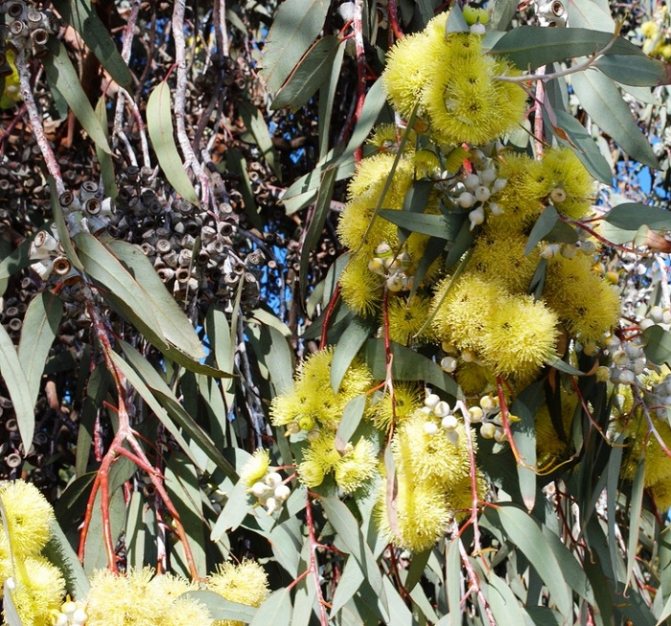

1.10 Air humidity
It tolerates a dry atmosphere well and will need additional moisture only with the onset of very hot weather. Welcomes constantly ventilated rooms with good air flow.
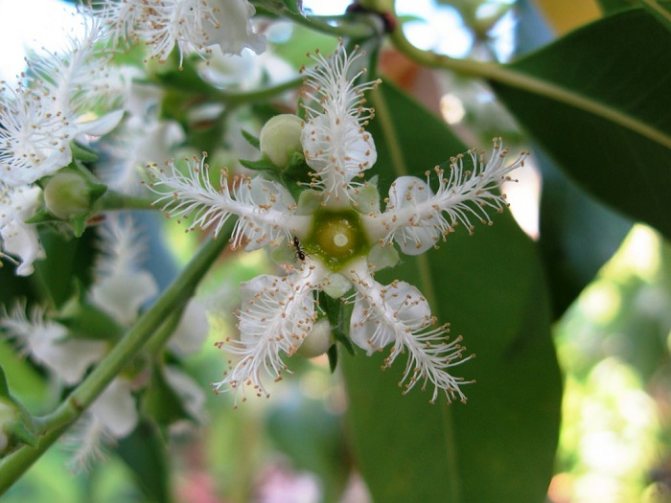

1.11 Soil moisture
In the spring and summer, keep the soil evenly moist or let it dry a few centimeters deep between waterings. When dry during this period, the plant may lose some of the leaves. During the winter months, if the plant is in a cool room, just keep the soil from drying out completely. It is advisable to use softened water for irrigation.
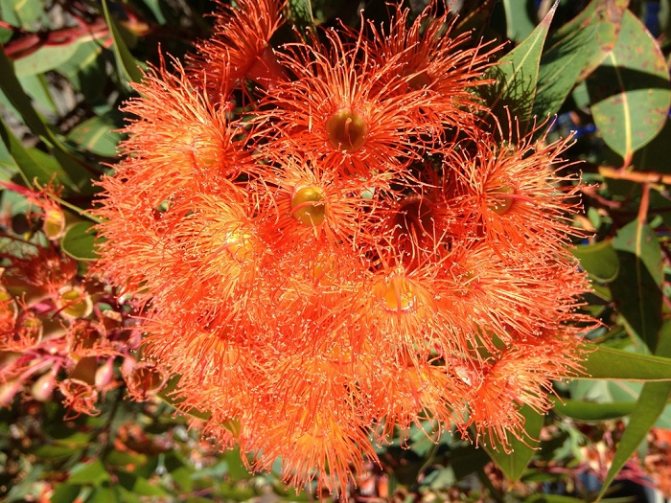

1.12 Transfer
Young plants are transplanted annually as they grow, in spring in larger pots. Due to their size, adult eucalyptus trees are difficult to transplant, so they change the top layer of soil to fresh every year. She tolerates a transplant easily. Use a plastic pot for planting, not a ceramic pot.
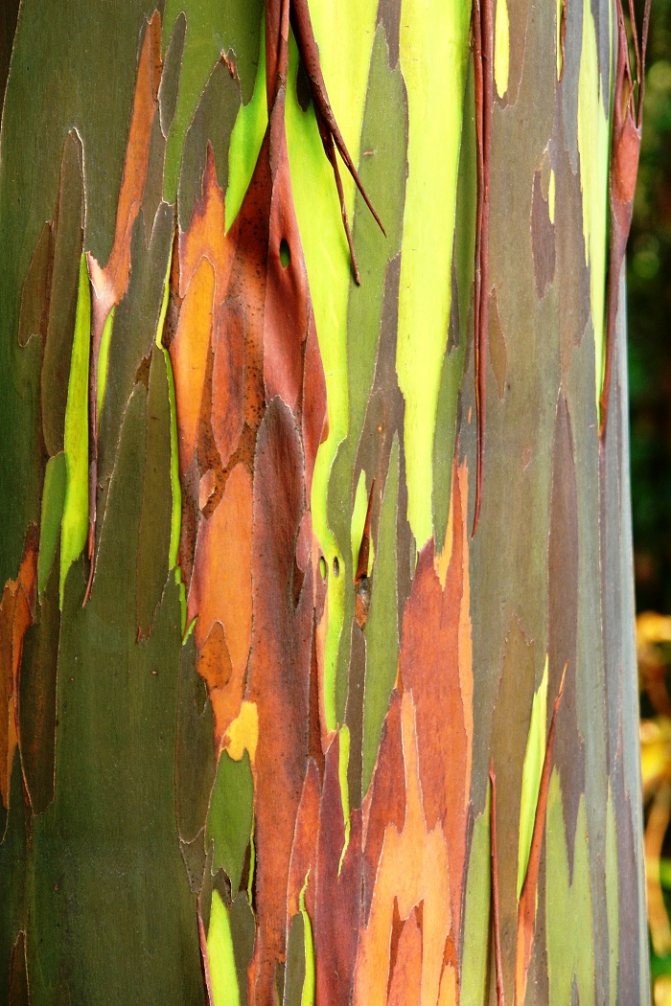

1.13 Note
All parts of the plant are poisonous - take precautions when in contact with the plant and keep the eucalyptus out of the reach of children and pets. Eucalyptus essential oil is used in perfumery and medicine. The aroma of eucalyptus leaves tones, relieves fatigue. Eucalyptus is able to clean indoor air from harmful impurities.Do not buy plants with crumbling leaves, and if you did buy such a specimen, root the stalk you took from it. With age, plants shed their lower leaves - this is normal.
Hydroponics .
Use in landscape design
Eucalyptus is a tree with an expressive appearance. It does not shed foliage and pleases with juicy greenery all year round. Specialists in landscape design have long learned to curb the exorbitant growth of "wards" by pruning, getting beautiful compact trees with well-formed crowns.
Landscape architects know many more valuable features of eucalyptus that make this tree so attractive to them.
Eucalyptus is also suitable for stabilizing soils on steep slopes and watercourses. Planting these trees helps prevent erosion. The plant loves moist sandy loam soils with neutral or slightly acidic pH.
2. Varieties:
2.1 Lemon eucalyptus - Corymbia citriodora
Tall, spreading trees with slender trunks covered with smooth, thin, light bark. Shoots are thin, profusely branched, can be painted in yellow or burgundy - brown shades. Leaves are hard, narrow, entire, up to 20 cm long, with a lighter shade of the central vein. The leaves are arranged in opposite pairs on long petioles. Branches and leaves, when damaged, emit a strong lemon scent. The flowers have long white stamens, collected in small inflorescences, rarely appear when grown in room culture.
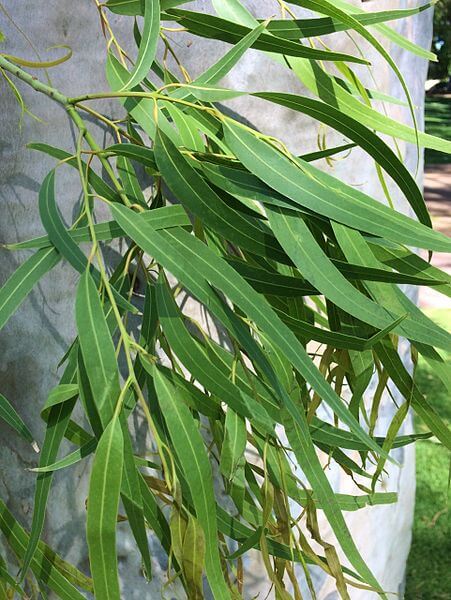

2.2 Rainbow Eucalyptus - Eucalyptus deglupta
Famous bright trees, the bark of which is painted in very different shades. In their natural habitat, these evergreen trees reach 80 m in height. This species is the most frost-hardy and withstands short frosts, and, in addition, it is the only one living in the server hemisphere. The leaves are dark green, narrow, spear-shaped, reaching a length of 15 cm. The leaf blades are rigid, entire. White fluffy flowers are collected in small axillary panicles.
Unfortunately, this tree is fast growing, which makes it difficult to maintain at home.


2.3. Eucalyptus rod-shaped - Eucalyptus viminalis
Slender trees with a spreading, airy crown 40-50 m high and a slender trunk covered with smooth, light brown bark. The leaves are narrow - lanceolate, 9 - 24 cm long, entire, bluish - green. Inflorescences are small - axillary or apical, bear several greenish - white fluffy flowers with numerous long, straight stamens.
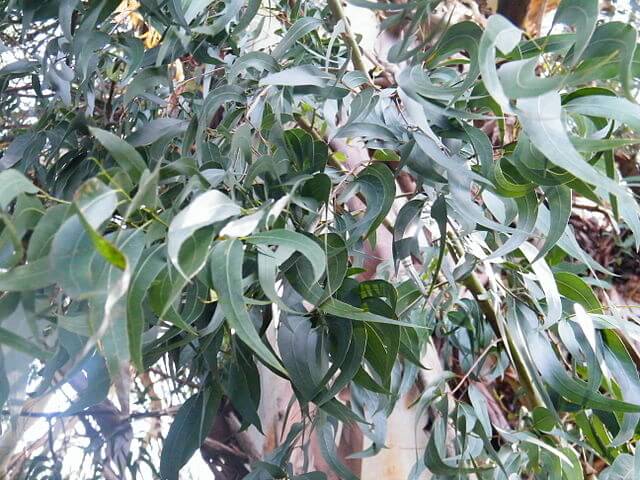

2.4 Eucalyptus Populus - Eucalyptus Populus
Evergreen, spreading trees with thin, multi-branched shoots. Leaves are dull, bluish green, rounded or broadly lanceolate, arranged alternately. The leaf blades are entire. Loose inflorescences - panicles carry many small, greenish flowers.
There are attractive ornamental foliage variations of these plants with burgundy-colored leaves or dark green leaf blades with large white spots.
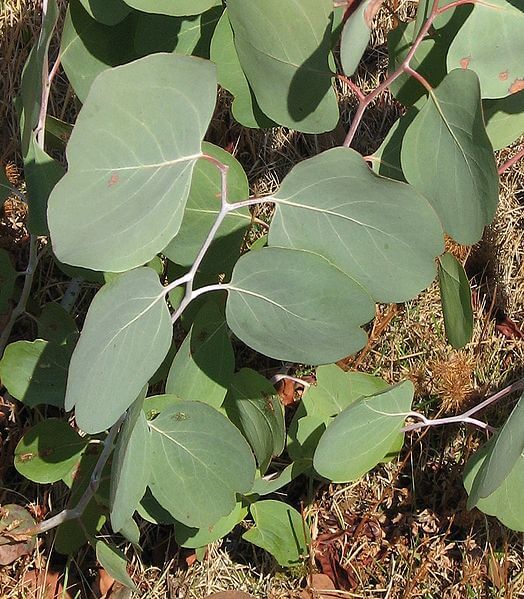

2.5 Eucalyptus gunnii
A short evergreen tree with a spreading crown and a thick trunk covered with thin, peeling bark. The leaves are lanceolate, dark green, reaching a length of 8 cm, arranged alternately, on thin, long petioles. The flowers are creamy or brownish, collected in small racemose inflorescences.
Read also: Acidity of drinking water norm
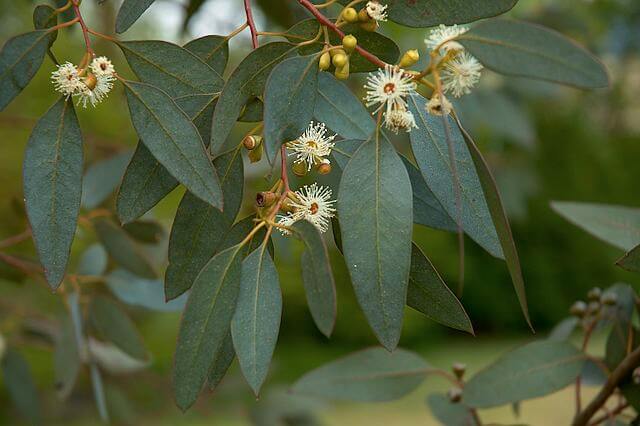

2.6 Eucalyptus globulus - Eucalyptus globulus
Evergreen trees of medium height with thin trunks covered with flaky bark. The leaves are lanceolate, green, glossy or dull, covered with a bluish bloom, reaching a length of 6 - 35 cm. An interesting feature of the plant is that young leaves are arranged on thin branches in opposite pairs, while adult leaves become alternate.The lower surface of the leaf plates is painted in a lighter shade. The attractive white or cream-colored flowers have numerous fluffy stamens and are collected in small inflorescences.
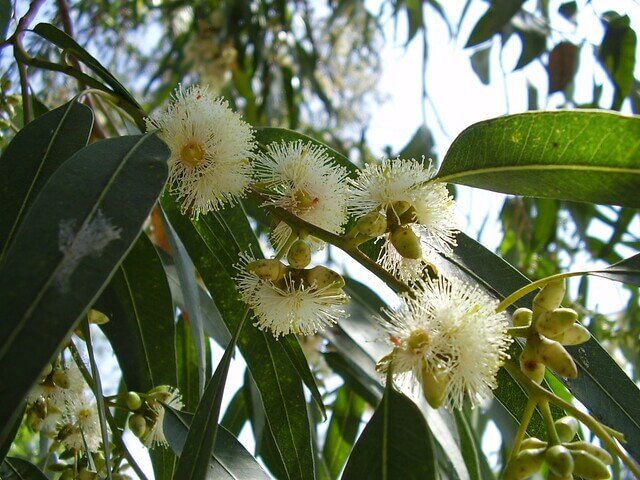

2.7. Ash eucalyptus - Eucalyptus cinerea
Spectacular evergreen trees up to 15 m high with a chic spreading crown formed by multi-branched thin shoots. Leaves are cordate or round, sessile, silvery-gray, reaching a length of 11 cm. Young leaves often have a pinkish or purple tint, and when damaged, they emit a pleasant aroma. The flowers are creamy, axillary, collected in small inflorescences.


You may also be interested in:
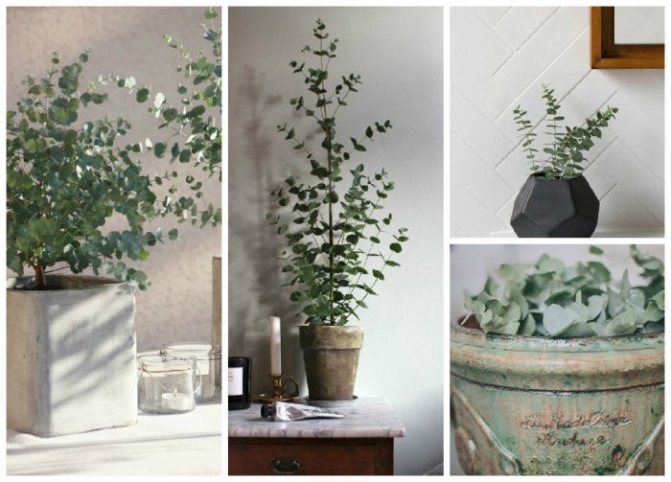

A plant like indoor eucalyptus known for secreting phytoncides. These special substances are able to destroy bacteria in the air, while a person can feel that it has become much easier to breathe. And this plant is also used to prepare remedies for various diseases of the respiratory tract and throat.
This plant is directly related to the myrtle family. It was first raised in Australia. Eucalyptus is a spectacular small, rather compact tree that has a pyramidal shape. It is a slow-growing plant, and the foliage is colored in an unusual green-blue color. The surface of the leaves is shiny and smooth, as if there is a waxy layer on it. Homemade eucalyptus stands out because its leaves change with age. So, young oval leaves are quite soft and have a specific aroma. Older foliage has a more elongated shape, it is dense and does not have such a strong smell. Eucalyptus has a strong aroma, as there is a large amount of essential oil in its leaves. In nature, this plant grows up to 150 centimeters in height, while in indoor conditions it is much lower. The flowers are single in structure, and the fruits are box-shaped.
The benefits of eucalyptus
A tree by the age of twenty is comparable in height to a 15-storey building. Eucalyptus trees are ready for industrial use at the age of 25-30. More wood is obtained from a young tree than from a century-old spruce or fir.
Eucalyptus wood is comparable in quality to black walnut. It does not rot for a long time, does not get soaked in water (and quickly sinks), and the active substances contained with an expressive odor scare off wood-boring insects.
Wood is used where durability, strength and quality are needed. Eucalyptus piles can stand for several decades even in water.
The decorative aspect is also important. Eucalyptus wood has an interesting structure and unusual color. Shades such as yellow, olive, lemon prevail, which makes this material attractive for the production of finishing materials and furniture.
Coal is also valuable because it has excellent characteristics, gives a large amount of heat and does not smoke.
Growing features
To grow eucalyptus indoors, you need to know some rules. So, the best suited for this are such species as Eucalyptus gunnii and lemon eucalyptus (Eucalyptus citriodora). They can be grown from both seedlings and seeds, which are quite possible to purchase at a flower shop. Despite the small size of the seeds, their germination is high.
To get started, prepare clay pots and fill them with an equal proportion of sand and earth. The earth is first slightly moistened, and then seeds are sown on its surface. It is necessary to maintain a temperature of 18 degrees. Watering is not necessary for the first four days after sowing. The first shoots, as a rule, appear already 5-10 days after sowing. Seedlings during this period need special care. Water them carefully so as not to overflow, and you also need to regularly ventilate the room.
Grown seedlings (3 centimeters), with young leaves that have appeared, should be dived into different pots.To do this, you need to take containers that are 10 centimeters wide and 15 centimeters high. Transplant carefully, as delicate roots can be easily damaged. After transplanting, watering should not be done for 4 days. Then watering should be moderate and daily. After 3 weeks, the plants will already get stronger, and they can be planted in permanent pots.
Bloom
Eucalyptus blooms in the fourth or fifth year of life. This is not to say that flowers have an unearthly beauty, but they are very unusual.
First, a rigid round box with a bottom at the end grows on a separate pedicel. The box grows, increases in size, stiffens. Then the bottom falls off, and a lush tassel begins to peep out of the box. Soon, the entire flower, consisting of filamentous stamens, comes out into the light.
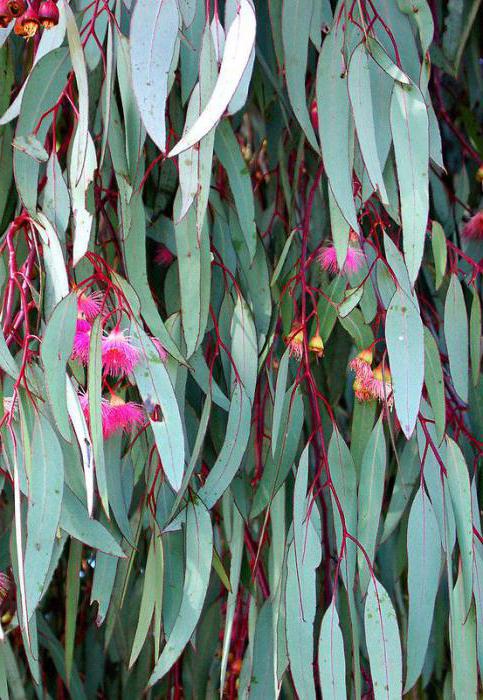

Different types of eucalyptus trees have flowers in different colors. They can be white, yellow, pink and bright red. Flowers have a light pleasant aroma.
Caring for indoor eucalyptus at home
Illumination
Light-loving plant. It is recommended to place it near a window with a south or south-east orientation.
Temperature regime
In summer and autumn, it feels good at a temperature of 16-18 degrees, and in winter - 12-15 degrees.
How to water
Water should be abundant in the spring and autumn, and moderately in the winter. Overflowing, as well as overdrying the soil, is undesirable, because this can lead to the fact that the upper part of the shoots begins to dry. You do not need to spray the eucalyptus.
Top dressing
You need to feed it 2 times a month. For this, special vitamin and mineral complexes for indoor plants are used.
Transplant features
Young plants are transplanted once a year, adults - once every 2-3 years. The pot should be chosen not very large, otherwise it negatively affects the roots of the eucalyptus. The soil mixture for planting consists of leaf, peat and sod land, as well as sand, taken in a ratio of 1: 1: 2: 1.
Diseases and pests
Disease resistant. Shield aphids and spider mites can settle. To combat them, it is recommended to use special purchased products.
Description and territory of distribution
Eucalyptus (Eucalýptus) is a fairly extensive genus of evergreen members of the Myrtle family. It includes both trees and shrubs. The trunk of a plant can be straight or curved. There is often a gum discharge on the surface. The crown can be different: from strict pyramidal to weeping.
Eucalyptus trees give almost no shade. And all because their leaves are located differently from other plants - they stand with an edge. The shape of the leaf plates, depending on the type of plant, is: ovoid, round, lanceolate, oblong. Eucalyptus flowers form inflorescences in the form of umbrellas or panicles. The fruit is a capsule. In most cases, it is smooth, but sometimes it is furrowed, tuberous or ribbed.
Most of the eucalyptus varieties are native to Australia, Tasmania, and New Zealand. This tree can be found in Indonesia, the islands of New Guinea and the Philippines. North of the equator, only one species grows in the wild - rainbow eucalyptus. On the territory of our country, this giant in natural conditions can grow only in the area of Sochi and the southern coast of Crimea.
Possible difficulties
When growing lemon eucalyptus, growers can face certain challenges. The main ones are elongation of shoots, dull color of leaves and a decrease in their size. All this is due to a lack of lighting. To avoid such phenomena, the plant is placed in a place well-lit by the sun, or lamps are used to grow plants at home.


Due to lack of watering, leaf wilting can be observed. Therefore, the owner of the lemon eucalyptus needs to adhere to the care recommendations. Otherwise, the decorative appearance of the tree may suffer.And if the eucalyptus experiences a prolonged drought, it may die altogether.
The root system needs an equally careful attitude. When transplanting a plant into a new pot, a more gentle method should be used - transshipment. This will help the plant adapt more quickly to the new location and resume growth.
Also, due attention should be paid to the intensity of the lighting. Excessive activity of the sun's rays can lead to burns of the leaf blades.
Taxonomy
View Ash eucalyptus
belongs to the genus Eucalyptus (
Eucalyptus
) subfamilies
Myrtoideae
families Myrtle (
Myrtaceae
) of the order Myrtaceous (
Myrtales
).
| 13 more families (according to the APG II System) | 130 more deliveries | |||||||||||||||
| order Myrtle | subfamily Myrtoideae | view Ash eucalyptus | ||||||||||||||
| the Department Flowering, or Angiosperms | family Myrtle | genus Eucalyptus | ||||||||||||||
| 44 more orders of flowering plants (according to the APG II System) | 1 more subfamily (according to the APG II System) | more than 700 species | ||||||||||||||
Contraindications and side effects
The healing properties of eucalyptus make the plant an indispensable tool for home treatment of bacterial diseases. However, like any other medicine, eucalyptus globular leaves should only be used as directed. Recipes for the preparation of infusion, decoction, tincture from the leaves must be strictly followed in order to prevent the undesirable effect of a self-prepared drug.
Side effects from the use of dried eucalyptus leaves can be manifested by allergic reactions: redness of the skin, rash, itching. As a rule, such phenomena disappear immediately after stopping the use of the plant. According to reviews, the external use of eucalyptus preparations causes allergies very rarely.
Also, before using medicinal raw materials, you must make sure that there are no contraindications to eucalyptus:
- undesirable use during pregnancy and lactation;
- individual sensitivity reactions;
- heart failure;
- renal failure.
Before using eucalyptus essential oil, it is necessary to conduct an allergy test: apply the oil to the inner bend of the elbow and evaluate the skin reaction after 20 minutes. Due to the high concentration of volatile substances and the local vasodilating effect, slight reddening of the skin is permissible after the application of the oil. The oil should not cause a burning sensation, pain or itching. With the right approach and following the instructions, it is impossible to harm the body with eucalyptus.
The globular eucalyptus tree is a source of valuable plant materials and essential oils, the properties of which go far beyond antimicrobial effects. The most popular treatment for cough is eucalyptus, but even with incipient heart disorders or disturbances in the functioning of the nervous system, this plant will help restore the proper functioning of the body.
Eucalyptus, or Gum tree, or Wondrous tree (lat. Eucalyptus) is a numerous genus of evergreen trees or shrubs from the Myrtaceae family.
Eucalyptus trees reach a height of 90 to 155 m. They live up to 500 years. Most of the species grows in the forests of Australia, New Zealand and Tasmania. Of the 800 species, only nine do not come from Australia. Therefore, eucalyptus forests and thickets were the basis of life for the local population of Australia. They were used as building materials. Their roots, seeds, shoots were used for food. In the absence of water, eucalyptus roots were able to extract moisture. Diseases were treated with its leaves. Most importantly, eucalyptus provided a healthy climate. Therefore, it was called "the tree of life", "the diamond of the forests", "the tree of miracles." Eucalyptus is grown in many countries both for its ability to decontaminate the air and for its rapid growth and ability to drain wetlands.
Yerucham forest. Here for the first time I met eucalyptus with pink flowers.Pink-colored eucalyptus trees began to come across from about Beer Sheva, as we moved south. In the center of the country, eucalyptus trees have white flowers. So it's understandable why I was attracted to these vibrant trees in Yeruham. With the same nature lovers like me, we started talking about rainbow eucalyptus trees. And then it turned out that in my "piggy bank" there are pictures of these trees, but they were without definition, under the general name "Eucalyptus". I tried to understand my archive, but I was able to identify the species with the most pronounced features. I admit that I could have made a mistake, so I welcome hints.
Swirling Eucalyptus / Eucalyptus torquata / אקליפטוס הצווארון


It is known from the history of Jewish settlements in the late 19th and early 20th centuries that the population suffered from malaria. The disease mainly affected the inhabitants of the marshy western regions (Hadera, Hula Valley and parts of the Jezreel Valley). Initially, doctors tried to understand the relationship between a disease and its causative agent. Although then most of them had no idea about the role of mosquitoes from the genus Anopheles, nevertheless, they saw the need to drain the swamps. For this purpose, thousands of seedlings were delivered to Israel - eucalyptus trees were planted in the affected areas.
The first major plantings were in 1888. Until 1921, when it was concluded that Eucalyptus was not fully fulfilling the task of draining the swamps, millions of trees were planted: in Rishon Lezion, Petah Tikva, Hadera, Rosh Pina. At the same time, eucalyptus trees have played an important role in the fight against malaria epidemics, killing Anopheles mosquito larvae along with the drainage of swamps. Today in Israel there are more than 120 species of eucalyptus trees imported from different countries and climatic zones, thanks to which they bloom at different times of the year. Moreover, there are both drought-resistant species and those planted at one time for draining swamps.
The scientific Latin name of the genus, proposed in 1788 by the French botanist Charles Louis Lhéritier de Brutel, is derived from the Greek. ευκάλυptος: εΰ - "beautiful", χαλυptός - "covered", with the general meaning "well covered" or "with a beautiful cap", since the flowers in the buds are closed with a lid.
The fruit is a capsule. The fruit is ligneous, opening with valves. When the flowers bloom, the cap falls off and many stamens are found in the form of a fringe.
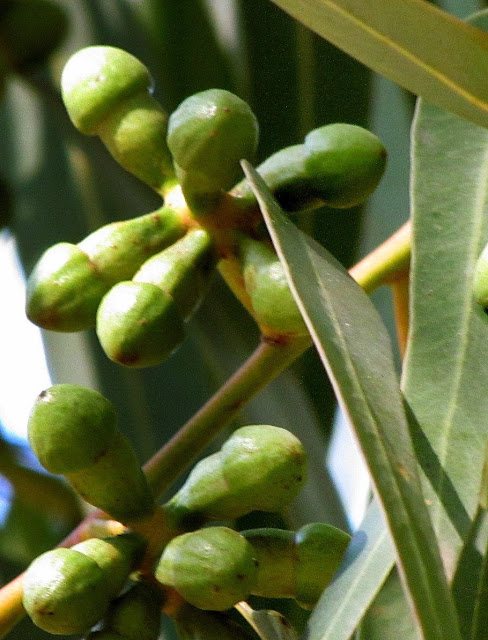

Eucalyptus Globular / Eucalyptus globulus
Ball eucalyptus is found under the names ball eucalyptus, shameless.
Eucalyptus camaldulensis Dehn / איקליפטוס המקור
Lemon Eucalyptus / Eucalyptus citriodora / אקליפטוס לימוני
Lemon eucalyptus oil is widely used in industrial production. It is used to improve the aroma quality of other essential oils from eucalyptus, which are used as disinfectants and germicides. In perfumery - for the aromatization of soaps. In the food industry, oil is used to flavor sweets.
Ash Eucalyptus / Eucalyptus cinerea / אקליפטוס מאפיר
Ash eucalyptus is a decorative decoration of flower beds and parks. Young branches are used to compose ikebana. This eucalyptus is popularly called the "Silver Dollar".
According to the structure of the bark, eucalyptus trees are distinguished into several groups. Among them are smooth-barked (gum trees) - the bark of the trunk is almost to the base and smooth on large branches.
In smooth-bore eucalyptus trees, the cortical layer falls off in ribbons or pieces


Fibrous - the cortical layer is thick, brown, fibrous, preserved on the trunk and large branches.
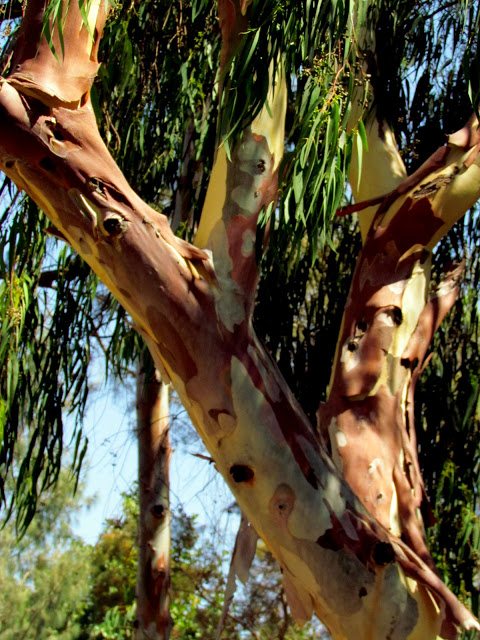

Rainbow Eucalyptus / Eucalyptus deglupta


In eucalyptus rainbow, the top layer of the bark is renewed annually. This trunk is not quite like a rainbow - the tree is young. The different colors are indicators of the age of the cortex: the recently lost, outer cortex will be bright green. Over time, the bark darkens and changes from blue to purple and then reaches maroon and orange colors.All the colors that the eucalyptus “survived” remain on its bark, growing up, it turns into a “real” rainbow. Rainbow eucalyptus trees are the most ideal tree for making quality white paper. In the woodworking industry, hard and heavy wood is used for the production of veneer, panels, furniture, parquet.
The evergreen eucalyptus is a wonderful honey plant. The bees that collect the nectar of the blooming eucalyptus do not get sick, and the honey obtained has excellent healing properties. Eucalyptus honey is almost always dark in color and sometimes has a slightly tart taste, it has pronounced antibacterial and anti-inflammatory properties, and is successfully used in the treatment of bronchial-pulmonary diseases, inflammatory processes of the skin and oral cavity. Recommended for cardiovascular diseases, as a mild vasodilator. The eucalyptus broom creates a cloud of steam in the steam room, which will eliminate lingering colds and strengthen a sore throat.
malamant
Eucalyptus - the Latin name for Eucalyptus - is a tall, fast-growing tree and shrub species. The homeland of the green giants of the plant world is the smallest continent - Australia and the islands closest to the mainland. Europeans brought evergreen eucalyptus (tree) to France in the middle of the 19th century for growing in gardens, and dwarf forms in greenhouses. Since then, these green skyscrapers, natural pumps and a thunderbolt of microbes have spread throughout the world.
Human use
All over the world, Eucalyptus has found many uses. Expensive furniture and even houses are made from strong wood that does not rot. The substances contained in the bark are used in tanning and many other industries. Essential oil is obtained from the leaves - a precious extract with many medicinal properties. It has been proven that inhalation with this oil is good for the treatment of respiratory diseases, relieves stress, and when applied externally in the form of a lotion, it helps to maintain a healthy appearance of the skin.
Application in traditional medicine
Globular eucalyptus is a tropical tree, so it is rather difficult for residents of the middle lane to prepare its leaves at home. Fortunately, every pharmacy sells pre-dried leaves. And not as a biologically active additive, but as a real standardized raw material collected from a pharmacopoeial plant. But for successful treatment, it is important to use this drug correctly.
Infusion
Features. It is used internally to treat wet and dry cough with bronchitis, pneumonia, tracheitis. The use of eucalyptus in the form of an infusion is advisable for gargling with laryngitis, sore throat, tonsillitis, regular rinsing of the mouth will help with stomatitis and periodontal disease.
Preparation and application
- Pour 10 g of dried eucalyptus leaves with half a liter of boiling water.
- Insist for a quarter of an hour, then strain.
- Take orally 40-50 ml four times a day.
- Warm the infusion slightly before rinsing, apply three times a day.
Decoction
Features. Suitable for compresses and rinses. Indications for use include phlegmon, abscess, furunculosis, purulent wounds, trophic ulcers, purulent mastitis.
Preparation and application
- Place 20 g of eucalyptus leaves in a saucepan, pour 200 ml of boiling water.
- Cover the mixture and keep in a water bath for a quarter of an hour.
- Insist 10 minutes, strain, squeeze the cake.
- Bring with boiled water to a volume of 200 ml.
- Treat the affected surface twice a day or apply a compress for two hours, soaking a flap of cotton cloth in the broth.
Tea
Features. It can be used as a general tonic before the cold season for the complex treatment of influenza and other acute respiratory viral infections. The remedy is recommended in the absence of appetite, with poor digestion, dysbiosis.
Preparation and application
- Pour a cup of boiling water (250 ml) over 30 g of dried eucalyptus leaves.
- Let it brew for a quarter of an hour.
- Drink in small sips throughout the day.
Tincture
Features. It is used internally for acute respiratory viral infections, bronchitis, laryngitis, pneumonia, malaria, stomach diseases, inflammation of the gallbladder, intestinal infections. Externally used for rubbing the back with sciatica, injuries, dislocations, sprains. In folk medicine, douching is popular for healing erosion of the cervical canal (cervix) c. There is a ready-made pharmacy option.
Preparation and application
- Fill a dark glass bottle with a capacity of 0.5-0.7 liters to a third with chopped fresh eucalyptus leaves.
- Add granulated sugar to half of the entire bottle.
- Put the vessel in a dark place for four days, tying the neck with gauze.
- Add half a liter of vodka to the resulting syrup, mix well.
- Insist a week in a dark place.
- Strain into a clean container, squeezing out the cake thoroughly.
- When taken orally, add 20-30 drops of the tincture to 50 ml of water. Take three times a day.
- For external use, including douching, mix together 200 ml of warm water and a teaspoon of the preparation. Treat damaged areas with a cotton or gauze swab twice a day.
Inhalation
Features. Effectively eliminate bacterial diseases of the upper respiratory tract, tracheitis. Used for a cold, sinusitis, nasal congestion, headache.
Preparation and application
- For inhalation, cool a glass of boiled water to a temperature of 60-70 ° C.
- Add 15 ml of broth, 20 drops of alcohol tincture, or 10-15 drops of eucalyptus oil to the prepared water.
- Breathe in pairs, covering your head with a towel, twice a day.
Butter
Features. is a clear, colorless liquid with a characteristic cineole aroma. Has strong bactericidal properties. It is used after dilution with water or indifferent oil. Pure oil is used only for herpes rashes.
Preparation and application
- Sold in pharmacies in dark glass jars. It is extracted industrially from fresh leaves.
- For rinsing, lotions, compresses, inhalations, 15-20 drops of oil are diluted with a glass of water.
- Evaporation of oil with an aroma lamp helps to disinfect the air in the room.
It is advisable to add eucalyptus essential oil to hair shampoos and facial cleansers. Short-term exposure to natural antiseptics helps to get rid of seborrhea, excessive oily scalp, acne, and dermatitis.
Eucalyptus is a part of ready-made medicines. These are sprays for the throat "Kameton", "Ingalipt", an extract from eucalyptus - "Chlorophyllipt", lozenges "Eucalyptus-M". All drugs are distinguished by antimicrobial activity, and have been successfully used in official medicine for a long time.
Eucalyptus globulus
At home, it is a tall, highly branched tree. In indoor growing conditions - a relatively low bush that needs to be systematically pinched and trimmed. In youth, the leaves are lanceolate, wide, with a beautiful wavy edge. In an adult tree, they bend like a sickle, stretch out and begin to resemble willow leaves. The bark of the spherical eucalyptus rejuvenates annually, flaking off in flaps, under which a new cover is formed. The fruits that give flowers of this variety of eucalyptus have a spherical shape and ripen for a very long time - up to two years.


Blank
The best raw materials are young eucalyptus leaves, which are harvested in September, since during this period they contain the largest amount of essential oil. First, the branches are cut with a sharp cleaver, then the leaves are collected from them. The leaves are laid out in a thin layer on the flooring and dried outdoors under a canopy or in a room that is constantly ventilated.
Eucalyptus is their hope today. They see this tree as an alternative to surviving with dignity.Angela Velazquez owns two eucalyptus apples, a mother and grandmother in a family of over 30 adults and children. But pothot takes over 35 years to be ready for harvest. Nilvia Guido, much younger than Angela, is the mother of the child and owns half a eucalyptus apple. This little plot also makes her own destiny. “If a person leaves with someone else, I need to get along with my son,” he says with confidence.
The peasants of Posoltegi, like other areas fueled by eucalyptus, have learned to love this tree, take care of it and respect it, because it is cared for and respected, on which life, food and future depend. There are several trees that can live almost anywhere, withstand almost any circumstance, and be in a hurry, in such a short time, making them a viable alternative. Among these trees are more than 600 varieties of eucalyptus trees that exist in the world. Eucalyptus should be thanked for a fundamental aspect of Nicaragua's future as a country: saving forest culture among Nicaraguan peasants.
Care rules
Any housewife can grow eucalyptus at home. Given that this plant is able to cope with some diseases, and besides, it has a lot of useful properties, more and more people tend to have such an instance at home. But not everyone knows about the peculiarities of growing this plant at home. Is it difficult to grow lemon eucalyptus at home? Caring for this plant will not cause much trouble for its owner. The most important thing in the growing process is to know all the features of the plant.
In order for the plant to grow and develop well, during its intensive growth, as well as in the summer period, you should always try to maintain a temperature of + 24 ... + 26 ° С. If there is such an opportunity, then it is advisable to take the plant to fresh air from time to time. The thing is that air circulation for lemon eucalyptus plays a huge role and is very important for its development and life. Drafts have a negative effect. During the onset of cold weather, the air temperature for the plant should not exceed + 16 ° C.
How to propagate yourself
You can grow lemon eucalyptus from seeds, as well as by rooting apical cuttings.
Germinating seeds
How to Grow Lemon Eucalyptus Using Seeds:
- Pour a drainage layer on the bottom of the planting container, and soil on top.
- Pour the seeds of lemon eucalyptus Ozone, slightly pressing them into the ground, pour warm water.
- Cover the container with glass or foil, put in a warm place for germination.
- Every day, the plantings need to arrange ventilation, removing the shelter and removing the accumulated condensate.
- The first shoots can be seen in 7-10 days. When the first shoots hatch, the shelter must be removed.
- When 3-4 real leaves appear, dive into separate small pots.
- When young plants grow to a height of 15-20 cm, transplant into a large pot.
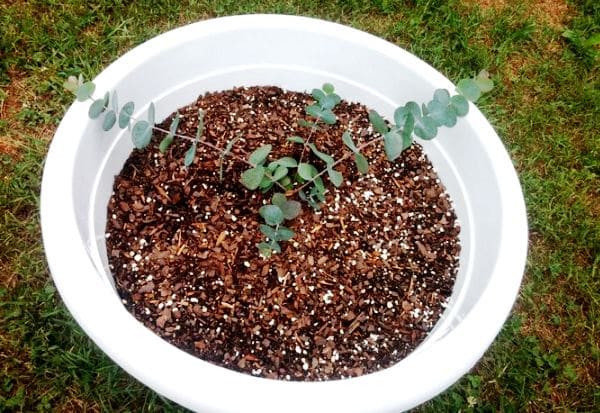

Grown seedling
Rooting cuttings
Step-by-step process of rooting cuttings:
- In an adult plant, several young shoots 10-12 cm long are cut off, all lateral leaves are removed.
- The cut is treated with a root growth stimulant.
- The sprouts are planted in prepared soil.
- Cover with foil and place in a warm place.
- It will take 3-4 weeks for rooting.
- When the cutting takes root small, it is transplanted to a permanent place.
What to remember
- The medicinal properties and contraindications of eucalyptus are due to the rich chemical composition. The plant contains a complex of minerals necessary for the normal functioning of the body, tannins, organic acids, essential oil.
- Plant-based products have immunostimulating, anti-inflammatory, antitussive, analgesic, disinfecting and regenerating effects.
- Excessive consumption of herbal preparations leads to the formation of side effects, for example, an allergic reaction.
A source
Characteristics
- dark green color;
- fresh, intense aroma with hints of camphor;
- spicy, bitter taste.
You can learn more about the properties of eucalyptus from the program "1000 and one Scheherazade spice"
Only for this it is worth planting eucalyptus. Harriter. Under optimal conditions, some varieties of eucalyptus grow up to five meters per year. After leaving Australia, eucalyptus spread throughout the world, and today more than 80 countries have sown from a few hectares of experimental and acclimatization to more than a million hectares in Brazil, half a million in India and more than 400 thousand hectares in Spain, three countries where more eucalyptus trees live outside their the original ecosystem. In all three, there are thriving logging and paper mills that find their raw materials in the vast eucalyptus forests.
What is made from eucalyptus: bath brooms, blankets, pillows


Eucalyptus pillows and blankets
If earlier only essential oil was made from eucalyptus, now, thanks to scientific progress, mankind has learned to use all parts of this unique natural giant for its needs. Recently, people began to process eucalyptus wood with a special chemical composition. It softens it and turns it into a rather flexible and smooth yarn, which is used to make pillow filler and wardrobe.
Such a filler is considered environmentally friendly, so both asthmatics and allergy sufferers can safely buy such products. Bath brooms are another popular eucalyptus product. They are made from young and flexible branches that have the strongest aroma. The use of such a broom in a steam room or sauna helps to normalize the respiratory system, and also contributes to the fact that all regeneration processes are intensified in the skin, as a result of which wounds and cracks heal much faster.
Where does it grow?
Eucalyptus is native to Australia. Also, wild thickets of eucalyptus can be found in New Zealand, Tasmania, New Guinea, Indonesia and the Philippine Islands. Today this plant is distributed throughout the globe. In Europe, Asia, Africa, North and South America, eucalyptus has gained popularity due to its ability to grow rapidly. It is planted in wetlands to drain the soil. In Russia, eucalyptus is grown in the Krasnodar Territory, in the Crimea and the Caucasus. Eucalyptus trees love sunlight, but they also grow on mountain slopes, in gorges and ravines.
Thus, it is easier to control all the assets of each of them. The unity built around this shared heritage that guarantees existence has fueled new small projects that help improve living standards: family and communal gardens, basic grain parcels, chickens, pigs and cattle. These peasants, who were small cotton producers, saw their future as closed with falling cotton prices in international markets and a sharp degradation of their land due to the prolonged use of agrochemicals.
Mushroom growing next to eucalyptus: name
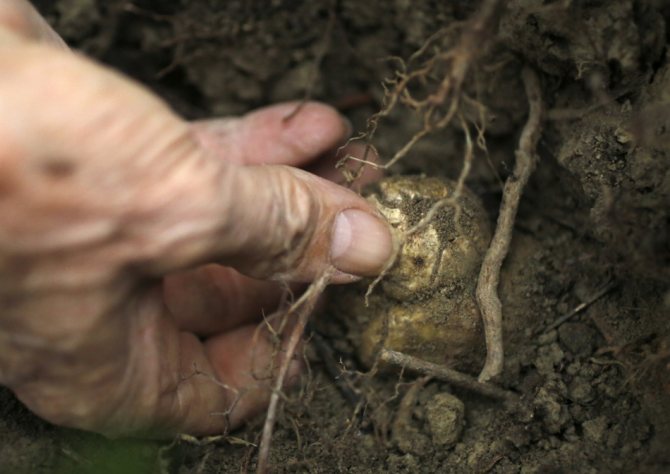

Mushroom growing next to eucalyptus
Eucalyptus groves are ideal breeding grounds for such an exotic mushroom for us as truffle. Its myceliums very tightly wrap the root system of the tree, sometimes even partially penetrate it, and help it to absorb water more quickly. And the tree, in turn, provides the mushrooms with some of its nutrients. Such symbiosis helps to develop well both the eucalyptus itself and the mushrooms.
This kind of truffle, like its direct relatives, grows underground.Therefore, if you want to find a mushroom in a eucalyptus forest, then you will need to carefully dig the soil around the tree. As practice shows, most often the fruiting bodies of truffles are at a depth of 20 cm.


